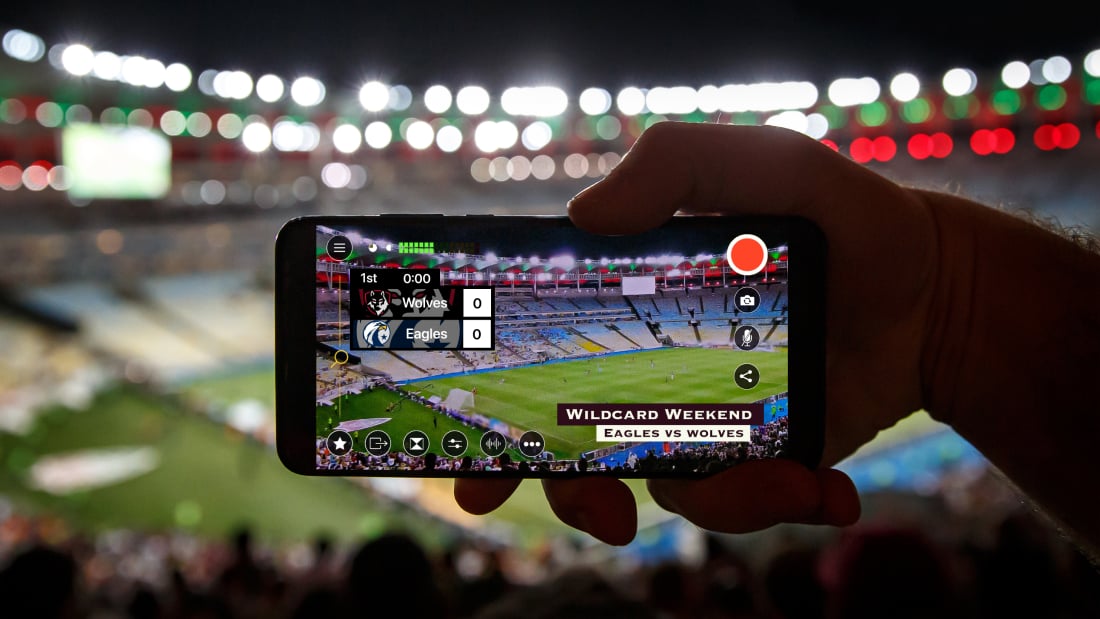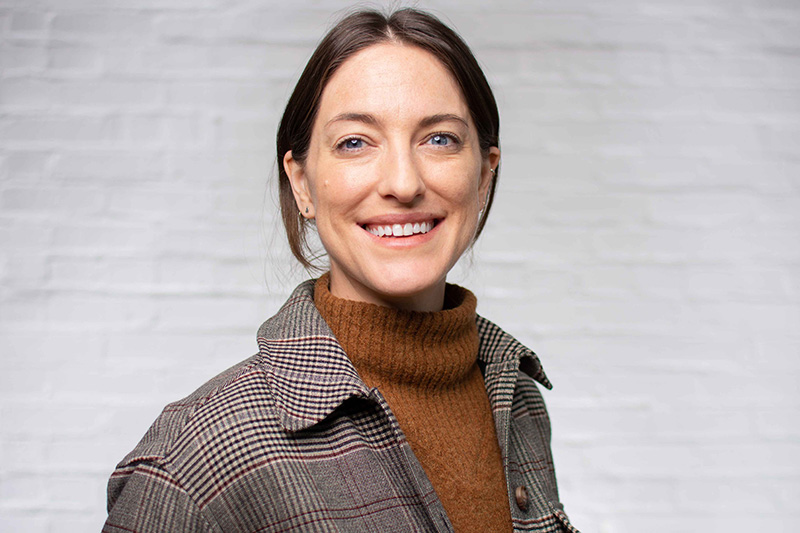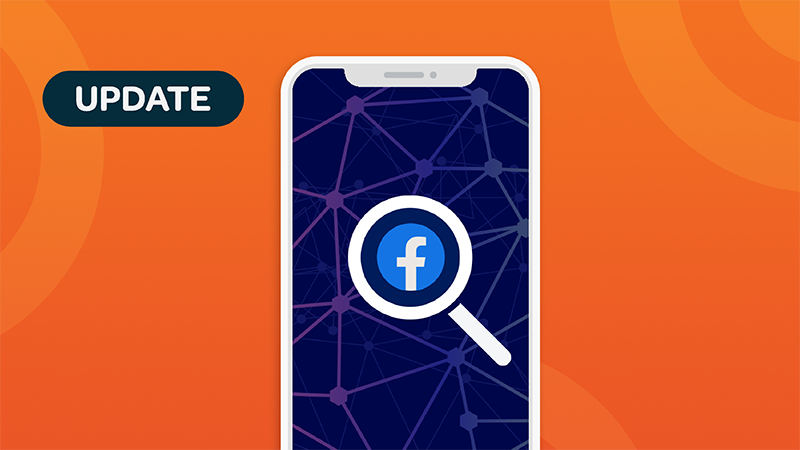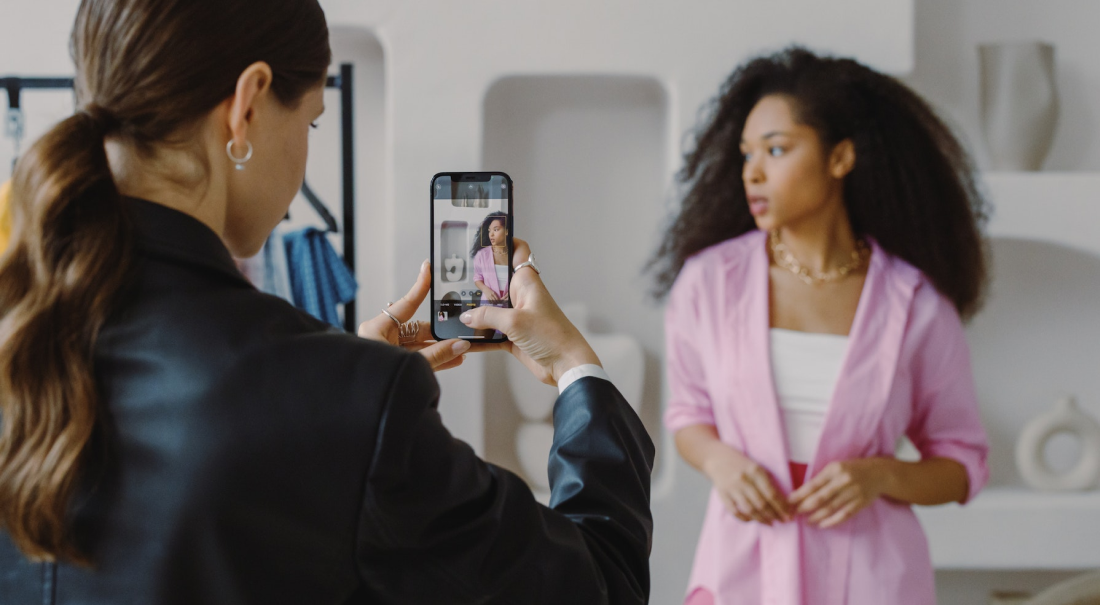
Wondering how social media algorithms work and how you can use data to build your social media presence?
The important thing to remember is that social media marketing is data-driven, and you can maximize your reach with the algorithm for Meta and other social media platforms. Social media marketing is a crucial tool in any marketing strategy, but especially as the main players in social media — like Facebook, Instagram, and TikTok — turn their focus to video.
This means that how you promote your livestreams and drive consistent viewership is more important than ever.
To succeed on social media, you must understand how these social platforms work. In this blog post we will focus on social media algorithms for Facebook and Instagram in Fall 2022 and talk about how you can achieve the following:
- Understand social media algorithms to optimize your content’s performance
- Build a loyal following to represent your brand online
- Optimize to make your content discoverable to new audiences
- Develop a strategic content plan based on your social media analytics
WHAT ARE IMPORTANT METRICS ON SOCIAL MEDIA?
Before we dive into Facebook and Instagram individually, two key metrics apply to algorithms across all platforms (including YouTube and TikTok): engagement and frequency.
Engagement
Engagement is the amount of interaction your content receives. This includes comments, shares, saves, likes, clicks, profile bio visits, and more. Social media is built around community connection and shared interests, so social media algorithms are designed to serve the most favored content to a wider audience — whether that’s favored by users or favored by the platform. This is why engagement with your post, video, story, reel, or livestream, plays a pivotal role in obtaining higher numbers for key metrics like organic reach and impressions.
Frequency
Frequency can be divided into two categories: Frequency of posting (how recently you posted your content) and frequency of engagement (how soon and how often users interact with your content). Both are important, as these algorithms are designed to serve you newer content first, then continue to prioritize it if users are quick to engage. This indicates that the content is interesting, and will keep current and new audiences engrossed.
WHAT ARE IMPORTANT METRICS FOR META’S ALGORITHM?
We have to acknowledge the elephant in the room: the big recent changes to Meta’s algorithms. Facebook and Instagram have made key adjustments to the way content is viewed in their feeds. Why?
- Meta competitors (like TikTok) are changing the rules for social media consumption
- Creators are looking for ways to monetize without restrictions from social platforms
- Users are exerting their influence to get the social media experience they want
In addition to general metrics that remain important, (like engagement and frequency), audience connection and novelty now play a role in how many people see your content on Meta’s platforms.
Audience connection
Within Meta’s reimagined feed experience for Instagram and Facebook, degrees of connection factor into who sees your content and how often.
Your core audience is comprised of personal connections and users who already follow you. Your core audience will almost always see your posts. Outside of your core audience are unassociated users who could see your posts based on shares and re-shares by their connections (or just based on recommendations from the platform).
Novelty
Now novelty also plays a role in what Meta chooses to prioritize. In this context, "novelty" includes “newness” and “originality”, which aligns with Meta’s broader goals of amplifying creators by increasing their potential for exposure.
Both the content format (video, livestream, image, story, etc.) and the content itself (subject matter, design, soundtrack, etc.) factor into what is considered novel. The development of formats like Reels makes novel content more discoverable for users.
Post timing (or posting frequency) also factors into the algorithm’s prioritization: The fresher the content, the more likely users will see it. The more users find and spend time with your content, the more the social media platform algorithms will reward you!
HOW THE FACEBOOK ALGORITHM WORKS AND HOW TO MAKE IT WORK FOR YOU
According to Sprout Social, 2.9 billion people globally use Facebook, so it remains the most-used social media platform in the world. Maybe just sit with that statistic for a minute before you continue reading.
What’s new about Facebook’s algorithm
Facebook recently released new details about its algorithm, detailing the shift to prioritizing video and creator content. This is great news for you! The new engagement structure looks at the Facebook feed distribution in two ways:
- Connected Distribution: Your posts are seen by those who follow you on Facebook. This is your core audience on the platform.
- Unconnected Distribution: Your posts are seen by users who don’t follow you but may be interested in your content. This type of distribution can come through other users sharing and resharing your posts or from our recommendations in Facebook's “Suggested for You” sections.
Relationships still matter, but recently Mark Zuckerberg also shared that Facebook plans to double the amount of AI-recommended content in the feed. That means the potential for even more new fans to discover your content.
HOW FACEBOOK’S ALGORITHM RANKS CONTENT
Here are the key takeaways from Facebook's new algorithm updates — the questions Facebook considers when deciding whether or not to serve you a post.
- Relationship to the creator: Is the post from a connection or someone you follow? If not, is there a chance you'd find the content interesting based on the creators you follow and engage with? Did someone with whom you have a connection share the post?
- Content type: What is the content format? Is it a video? What kind of video (livestream, story, reel, video on demand)? What content format is the newest to the platform and therefore featured (e.g., Reels)?
- Post popularity: How are people who have already seen the post (especially your friends) reacting to it? Are they sharing it, commenting on it, ignoring it, or smashing that angry face?
- Content originality: Does the content demonstrate a unique perspective? Is it posted with watermarks from other social platforms? (Posts get more distribution when filmed and created specifically for Facebook, in the creator's unique, distinctive voice.)
- Post lifetime: How new is the post? (Newer posts are ranked higher.)
HOW TO MAKE FACEBOOK’S ALGORITHM WORK FOR YOUR CONTENT
So what does this mean for you? Here are a few tips to get the algorithm on your side.
- Create more video content: Video formats are now Facebook's preferred content. With video occupying up to 50% of the time users spend on the platform, creating video content is unavoidable if you want to connect authentically with your friends, fans, and potential audience. Video content includes short-form reels, stories, live videos, and videos on demand.
- Optimize for shares and recommendations: Make content that other users want to share. That means videos with higher production quality (*ahem, Switcher), videos with a narrative, and posts created with the mobile experience in mind. However, don't try manufacturing sharing behavior artificially with CTAs or rewards. You can learn more about how to make sure your posts meet Facebook’s standards for Recommended Content by checking out their integrity rules and guidelines.
- Engage your audience and drive conversation: Ask questions, encourage your audience to share information in the comments, and always respond to your audience quickly! Getting conversations started in the comments, (with you or with each other), will signal to Facebook that this content is interesting to your community.
- Turn your video viewers into diehard fans: Make it easy for potential fans to find your video content by writing descriptions, titles, and keyword tags that are clear and relevant. Then, share bonus content or exclusives to build excitement and get your audience to return. When users come back to your videos again and again, or actively seek out your content through Facebook Search, it’s a strong case for Facebook to increase your content distribution.
- Become friends with Facebook Creator Studio: Facebook’s analytics tools help you understand your audience — how they connect to your content and how they engage with your page or brand. Make use of this tool!
INSTAGRAM ALGORITHM EXPLAINED — INCLUDING INSTAGRAM STORIES, REELS, AND ITS NEW FEED STRUCTURE
Instagram is owned by Meta, so naturally, there are similarities between the structure of Facebook and Instagram algorithms. Some of the big changes to the Instagram algorithm will sound familiar, as both platforms are reacting to user experience, creators' influence, and pressure from competitors. However, users interact differently with each of these platforms in different ways, so their algorithms differ slightly in how they cater to their users’ behaviors.
What’s new with Instagram’s algorithm
One of the biggest changes to how users experience the Instagram algorithm is the restructure of the Home feed view. Now users can choose to see their Instagram feed in three ways: Following, Favorite, and the Default Home feed view. So what's the difference?
- Following Feed View: Posts are shown chronologically and include only content from the accounts a user follows.
- Favorites Feed View: Posts are shown chronologically from the user's Favorites list, up to 50 accounts. This includes people like your friends, family, and favorite creators.
- Default Feed View: Posts from favorite accounts show up higher, but Instagram mixes in suggested content based on interests. Recommended content could end up being over 30% of the content in the Default feed, especially with the growing popularity of Reels. If a user doesn't select Following or Favorites, this is the Home feed view they'll see.
Along with the user's preferred Home feed view, content formats that keep users on the platform are ranked higher in the Instagram algorithm. In other words, creating Reels and stories is currently the best way to get your content discovered (and keep your audience interested).
HOW INSTAGRAM’S ALGORITHM RANKS CONTENT
Instagram pays attention to the accounts you follow, the accounts you interact with, and the kind of content you show interest in from those accounts.
For example, if you interact with National Geographic’s photo content consistently, you might also start to see their Reel content. Additionally, the algorithm might serve related content, like Reels from The National Park Service or NASA, to your Default Home feed. Remember, these platforms want your likes, saves, profile bio visits, comments, and taps — even the time you spend scrolling.
The following key factors help determine how Instagram distributes content to each user.
- Relationship: This is where the algorithm considers things like: Who is the user choosing to see in their feed (Following, Favorites, or Default view)? Who matters to the user based on the content they search for and interact with (for example, in the Explore Page, Stories, Live Videos, and even DMs)? Who does the user follow, and who might they know outside of the app?
- Format: Short-form videos — specifically Reels and Stories — are becoming increasingly important to Instagram’s strategy. Over 20% of the time viewers spend on Instagram is dedicated to viewing Reels. With the sunsetting of IGTV and the expansion of Reels, Instagram is leaning toward promoting the kind of content users have indicated they want: short-form video.
- Interest: Interest on Instagram is a prediction (by the platform) of how likely you are to interact with content. In terms of importance to feed ranking, these are the top interaction types according to Later.com:
- Time spent on the post
- Likes
- Comments
- Saves
- Taps on profile (i.e., How likely are you to visit the creator's profile after seeing the post?)
- Originality: Like Facebook, Instagram is fostering a space where creators can thrive. The more unusual the content is, the more Instagram will prioritize it. (In other words: The algorithm will favor content that hasn't been shared by someone else.) Additionally, Instagram is going to start cracking down on de-prioritizing content with watermarks from other platforms — so think twice before reposting that video directly from TikTok!
- Discoverability: Instagram is using keywords, descriptions, and metadata to get better at identifying the subject matter of an image or video. Now it’s not just about the hashtags. The better you are at incorporating key search terms into your post captions — even your Reels scripts — the more likely your content will be served to the audience you want.
- Timing: Instagram seriously cares about when you post because it wants to encourage real-time conversation. Again, depending on which Feed view your audience has chosen, when you post can make or break your content performance. If a user has chosen one of the chronological feeds, your post timing should be based on when those users are most likely to be scrolling. The Default feed view also takes into consideration how often your users scroll on the app — so it will pick and choose what to prioritize based on when they tune in. This is where Instagram Stories become important because Instagram serves Stories based on relationship and timeliness.
HOW TO BECOME MORE DISCOVERABLE ON INSTAGRAM
So what does this all mean for you? Here are a few tips to get you started refining your Instagram strategy:
- Stay up to date: Instagram is always experimenting. The success and popularity of Reels have proven that if you stay up to date with new content types Instagram has created, you can succeed quickly.
- Don’t just hit "Repost": A little bit of originality goes a long way on Instagram, so creating a high-quality video Clip with Switcher can help you streamline and repurpose your content without breaking Instagram’s ranking guidelines. Export your video clip to Instagram without a watermark, then natively add music, text, or a sticker to take advantage of the algorithm.
- It’s a conversation, not a lecture: Encourage engagement and relationship building by making your Instagram strategy about more than just posting. Use Story and Reel Stickers, clever captions, DMs, and comments on others’ posts to ask questions and keep the chit-chat vibrant.
- Catch your users when they’re scrolling: If you have a Business or Creator account, use your Follower Insights to learn when they’re most active on the app. You can sort to see what times for each day have the highest activity, so you can better time your Reels, Stories, and other posts
We hope this post has helped you make sense of the (current) Facebook and Instagram algorithms and has given you some inspiration for creating a strategic social media content plan. Have questions, feedback, or comments? Hit us up on social media — we're always ready for a conversation. 😉
Subscribe to the blog
Sign up to receive notifications whenever a new blog post is published. You may unsubscribe at any time.

Share
About the Author

Clare is Switcher Studio’s brand manager. With 10+ years of experience in social media marketing and content creation, she has worked with brands in various industries to build loyal audiences online through strategic digital campaigns. Clare is excited to share her knowledge of analytics, algorithms, and more, so you can promote your live video productions and gain more viewers.
All posts by Clare White


